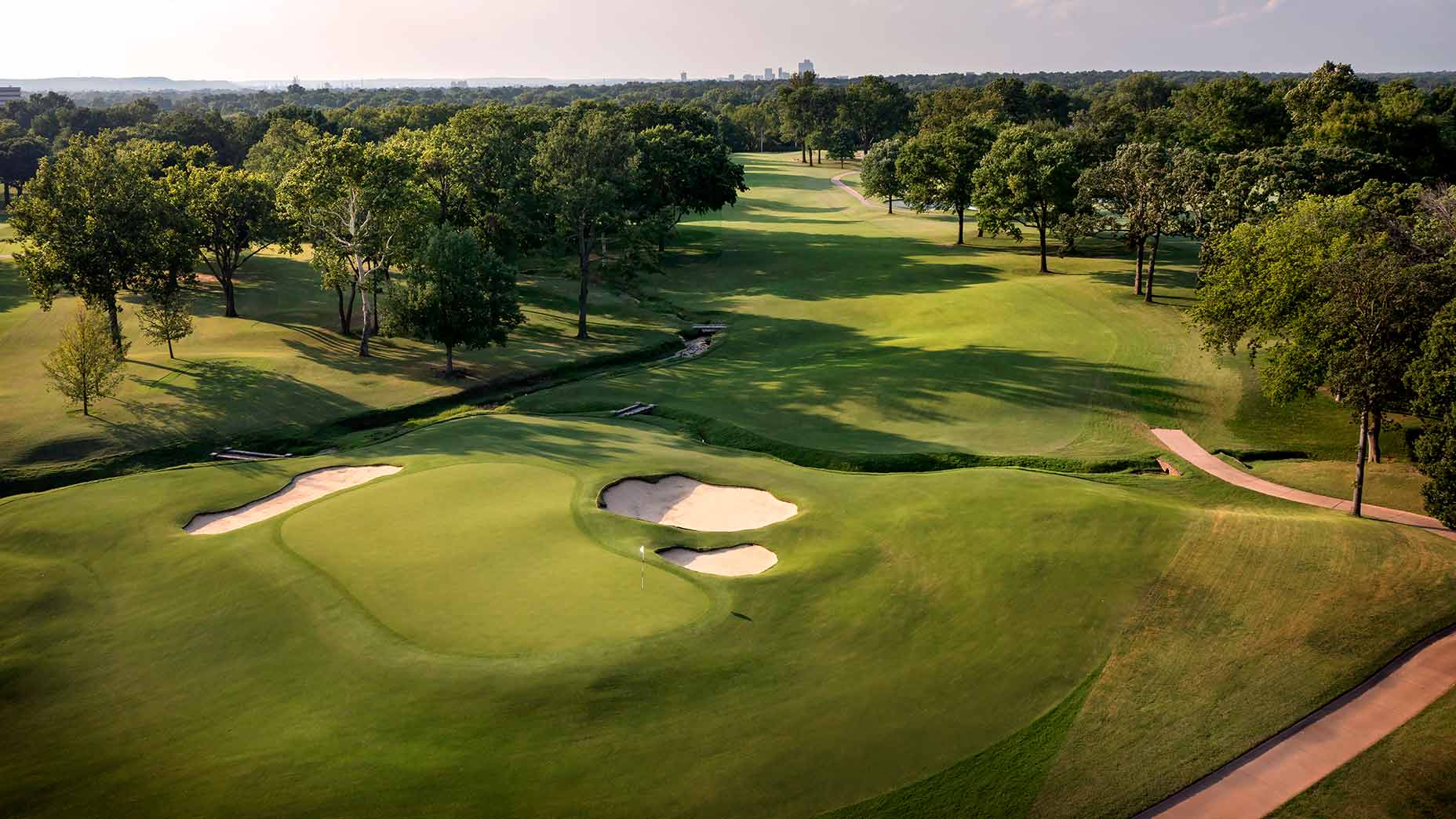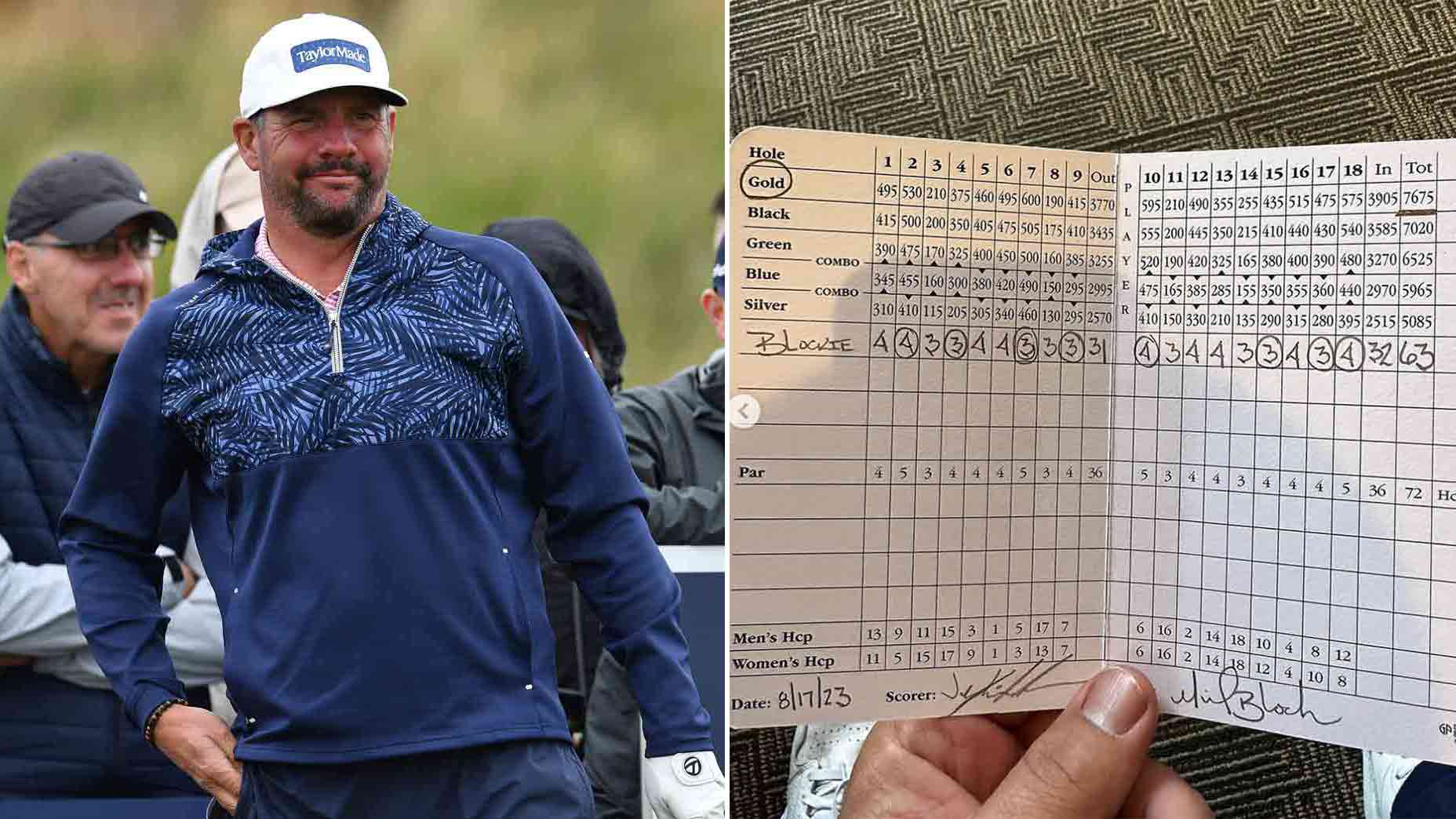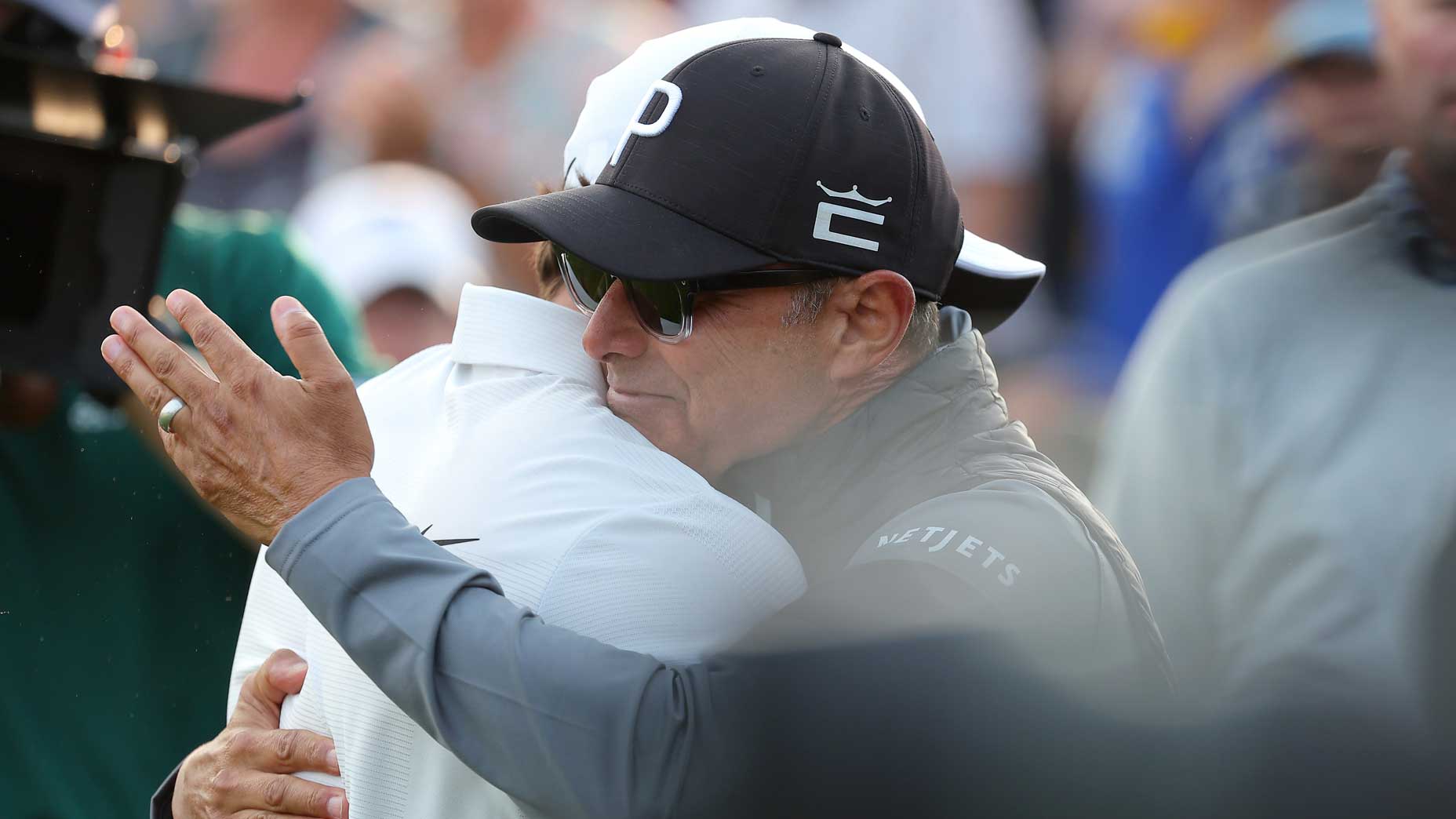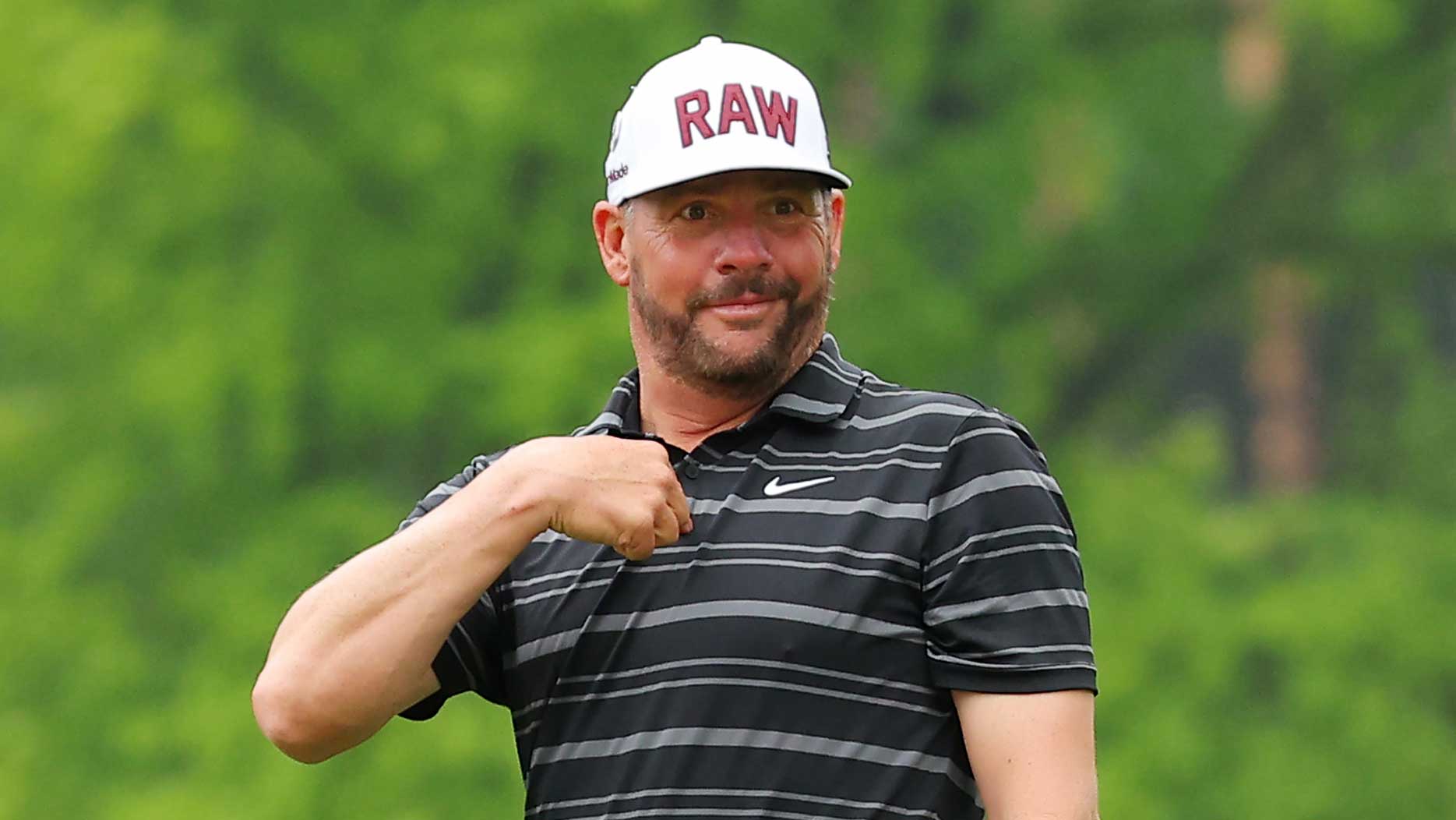3 architecture experts discuss the charms and challenges of Southern Hills

A view of the 5th hole at Southern Hills Country Club, host of this week's PGA Championship.
Gary Kellner/PGA of America via Getty Images
GOLF’s Top 100 course panelists are among the most respected and well-traveled course evaluators in the game. They’re also keen to share their opinions. In this GOLF.com series, we’ll unlock their unvarnished views on all questions course-related. Check out GOLF’s latest Top 100 Courses in the U.S., Top 100 Courses in the World, Top 100 Courses You Can Play, Best Municipal Courses in the U.S., and 100 Best Short Courses. Meet all of our Top 100 panelists here.
To armchair architects, Perry Maxwell is probably best known for the distinctive contours of his greens, aka, Maxwell Rolls. What are some of the other defining traits of his work, and how clearly are they in evidence at Southern Hills, host of this week’s PGA Championship?
Ran Morrissett (Architecture Editor, GOLF Magazine): Alister MacKenzie thought the world of Perry Maxwell and his abilities, which tells you all you need to know. Maxwell was exceptional at every aspect, from routing and incorporating landforms within holes to building great green complexes. Nothing is overshaped on a Maxwell course and every design feature has a purpose. But he knew when to leave well enough alone.
Thomas Brown (Panelist since 2015; has played 95 of the Top 100): No playing favorites here but Southern Hills is among mine. Aside from being a celebrated American golf architect, Maxwell was also known as Mackenzie’s “Midwest Associate,” assigned to construction on a number of famous courses, including changes to Augusta National, where those Maxwell Rolls contours are certainly evident at the front of the 14th green, among other places. A theme in Maxwell designs, which is in vogue now, was natural golf without extravagant construction budgets or extraneous artificial bunkering. Maxwell generally kept greensites a safe distance from waterways and creeks, which certainly makes sense in areas prone to flooding. That said, an important improvement to perhaps the most difficult hole at Southern Hills came during the renovation work by Gil Hanse and Jim Wagner. They moved the 7th green from a plateau on the left to a position closer to a creek.
Adam Messix (Panelist since 2017; played 100 of the World Top 100): There are several traits that Maxwell carried over from MacKenzie. The first is how his courses lay so well on their properties. Nothing looks forced or created, even when perhaps it was. The other thing is the quality of the detail of the greens and their surrounds. Par is very well defended at the green on Maxwell courses and Southern Hills is no exception. The other subtle trait I see is that his courses are well bunkered, and even though not all of those bunkers are penal, none of them are superfluous.
Southern Hills will play as a plus-7,500-yard par 70 this week. Fair to call it a bomber’s course? What, if any, style of play does it favor?
Morrissett: No, I don’t think so. One consideration is the wind, which could really work against a high ball, bomber type. Another consideration is that Southern Hills has one of the premier greenkeepers in the country in Russ Myers. With any help from Mother Nature, you can expect to see balls scooting along his fairways. A low-ball hitter who keeps it straight should get plenty of run to allow him to be very competitive, even against those who carry it much farther.
Brown: I’m not so sure. A couple of 600-plus-yard par-5 holes are a good part of that yardage. I’ve heard rumors that three-shot holes still might exist out there – well, maybe only for the short hitters. The last few weeks have brought a burst of spring rainfall, so balls should be settling into that Bermudagrass rough, potentially neutralizing some of the driver/wedge game that has become the new college graduation requirement. I expect Myers and his team will deliver the closely mown areas around the greens as perfection, which means a deft and creative up-and-down game is going to be at a premium.
Messix: Despite the yardage, I think it’s anything but a bomber’s course. If you look at the winners at Southern Hills over the years — from Tommy Bolt and Hubert Green to Raymond Floyd and Tiger Woods — it tends to favor good ballstrikers and shotmakers. Even though there are fewer trees now, the holes still have plenty of movement to them. I still think the likely winner will be the player who can work the ball both ways and control their trajectory because the course still requires precision.

This will be the fifth PGA Championship for Southern Hills (which has also hosted three U.S. Opens) but the first since a 2019 renovation by Gil Hanse and Jim Wagner. What about the course has or hasn’t changed?
Morrissett: This is not your father’s Southern Hills! The course has gone from being narrow and tree lined with clean-edged bunkers to something much more fascinating, deservingly considered among the handful of best parkland courses in America. It is hard to know how it will look crammed with spectators and bleachers but now that the holes have been allowed to breathe via tree removal and pruning, viewers should gain a much better appreciation of the rolling hills and creeks that weave throughout the handsome property. Countless playing angles and hole locations have been restored. Don’t miss the 2nd hole. It is one of the country’s great par-4s that no one talks about.
Brown: The quality of the natural routing and walk certainly hasn’t changed for everyday play. The most important aesthetic changes were to give bunker shaping a natural characteristic closely aligned with Maxwell’s maintenance design ethos, and to integrate the creeks into the line of play for both drives and approach shots. In terms of strategic design, the 17th-hole renovation should generate excitement. It gives the PGA’s set-up man Kerry Haigh the option to move the tee forward to play the hole as a drivable par-4. One additional detail from the green complex renovation design is the use of a new technology in subterranean irrigation heads surrounding the greens. On the 17th green in particular, this means no irrigation heads interfering with the line of play and limiting ground-game options.
Messix: There are far fewer trees than 2007 and Ran is correct that the bunkers have changed dramatically in style. The biggest change is that there are more hole locations on the greens with the edges of these greens being particularly interesting. The 6th and 7th holes, most notably the greens, have changed for the better. On a non-architecture note, the agronomic changes here have been dramatic. Myers and his staff should be able to control the conditions, barring a major rain event, so from tee to green the course will have a firmness and speed that the PGA of America is seeking.

In a major championship, any hole can prove pivotal. But are there any at Southern Hills that you expect to be especially compelling this week? Why?
Morrissett: I would pay attention to the two shortest par-4s on the back, 10 and 17. The perched 10th green can make you look foolish and the pros will need to control their spin on their approach or the ball can easily “de-green.” As Tom noted above, 17 provides the PGA all kinds of interesting set-up possibilities. Look for fireworks on the 71st hole come Sunday. Continual advancements in technology since Maxwell’s passing have only made this half-par hole even more exasperating as pros press for a birdie on this sub-400 yarder.
Brown: No. 11. It’s the shortest par-3 on the course and may only be a downhill 9-iron for the field. It sits in the middle of an inspired stretch with holes 10 through 12 traversing along the slope to play laterally to the creek. A nice Sunday breeze might bring double bogey into play from a miss long left into the creek re-established by the renovation. Lay up and play short to the front-right portion of the green is not something I’ve heard PGA caddies tell their accomplished players coming down the stretch of a major championship. But it might be sound advice come Sunday afternoon.
Messix: It will be fascinating to see how the course is set up. Will the new back tee on 13 be used all four days? If so, there will be a surprising number of bogeys for a par-5. There are three half-par holes to finish the round with two brutal par-4s at 16 and 18 sandwiching the tricky but gettable 17th. My guess is they use a forward tee on 17 at least two of the four days, tempting the field to play the heroic and often foolish shot toward the green off the tee. If the fairways are hard and running, you could see some very difficult recovery shots around this and many of the greens.











